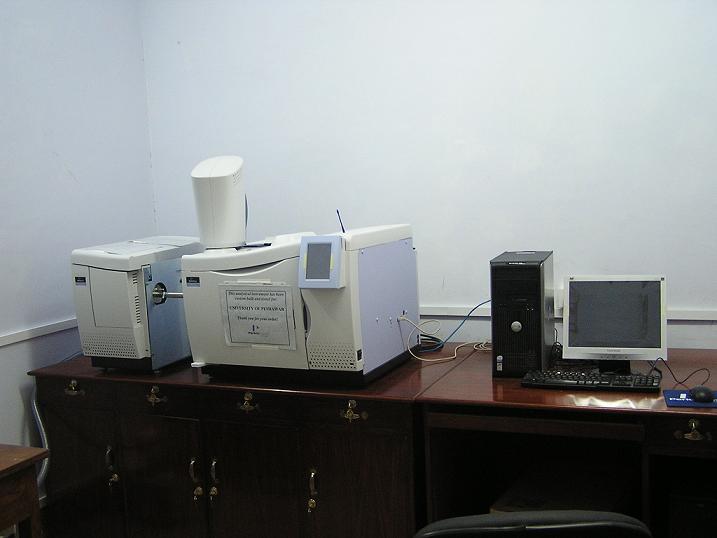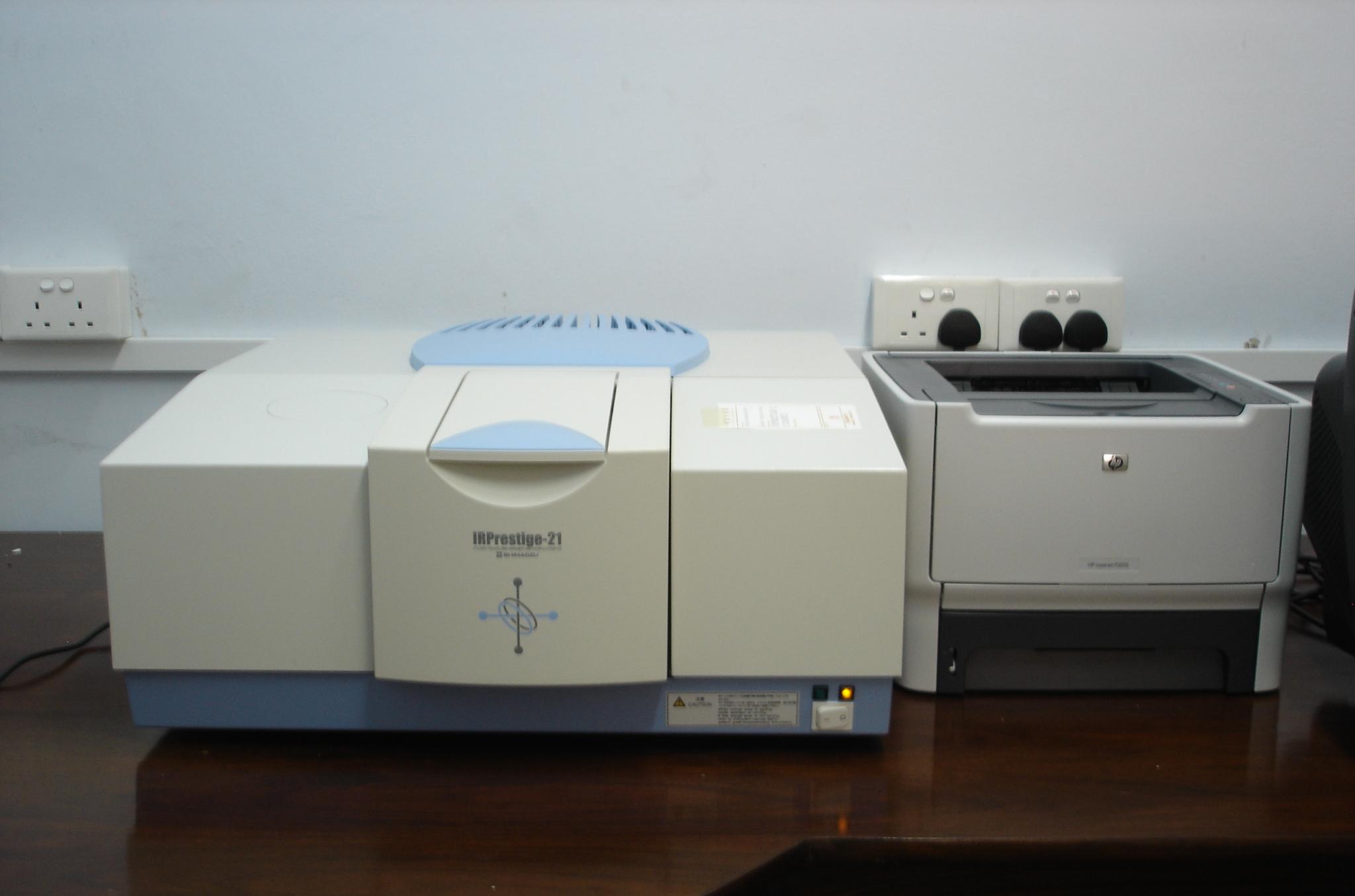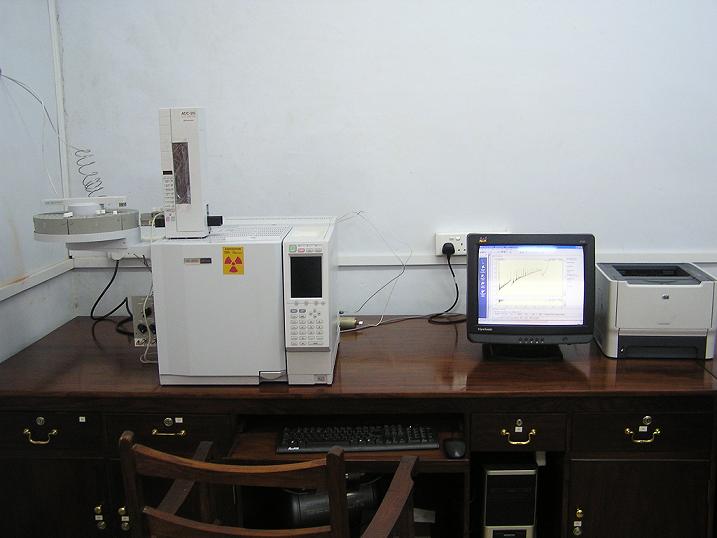NCEGLABS FACILITIES MANUAL
Petroleum Geology Laboratory
Petroleum Geology Laboratory is equipped with Shimadzu-QC 2010 GC with three detectors: FID, TCD and ECD, Perkn Elmer-Clarus 600 Series GC-MS, and FTIR. The laboratory also has sample preparation facility prior to be analyzed on GC-MS and GC.
Table1.1. The characteristics of FID, ECD and TCD detectors available in Petroleum Geology Laboratory for Shimadzu QC 2010 GC.
Detectors |
Type |
Carrier Gas |
Selection of compounds |
Detectability limit |
Dynamic Range |
Flame Ionization (FID) |
Mass Flow |
He or Hydrogen |
Organic compounds (C10-C44), chloroflorocarbon
Suitable for carbon and hydrogen compounds but cannot be used for non organic compounds.
GC-FID cannot be used to determine high volatile or non volatile organic compounds. |
100 pg/sec |
107 |
Thermal Conductivity (TCD) |
Concentrate |
Reference |
Universal |
500 pg/ml |
107 |
Electron Conductivity (ECD) |
Concentrate |
Reference |
Halogens, sulfur, nitrogen compounds |
0.5pg Cl/sec, 2 pg S/sec, 4 pg N/sec |
105 |
Table 1.2. The differences and similarities between GC-MS and GC-FID
|
Perkin Elmer-Clarus 600 Series GC-MS |
Shimadzu QC 2010 GC-FID |
Types of compounds |
semi-volatile and non volatile organic or non organic compounds with molecular weights >50 compounds (containing the functional groups sulphur, nitrogen and oxygen) were investigated and gave the following trend in stability: S>C>N>O, -CH3, -CH2, and -CH2-O- bridges between aromatic structures takes place. |
Characterize volatile and semi volatile organic compounds,
gaseous hydrocarbons (C1-C7) with molecular weights <100, C6 alkane (hexane) will exhibit an FID detector response similar to that of a C6 aromatic (benzene). |
Types of samples |
Rock, soil, sediments, liquid, oil, plant extract, protein, fatty acids, lipids etc |
Rock, sediments, soil, liquid, oil, plant extract, etc |
Detector type |
Mass spectrometer |
Flame ionization detector |
Compounds identification |
Universal and sensitive, provide information about the structure of the molecule. |
FID is considered universal detector for oxidizable carbon compounds. Very sensitive, detection limits 50 ppb |
Results |
From GC/MS chromatogram, the types of hydrocarbon present in a sample are identified and also determine the concentration of these hydrocarbons in the sample. |
GC/FID chromatogram only provide peak area which has to be compared with the standard, it does not provide quantitative information about the sample. |
pyrolysis |
The equipment also used for pyrolysis |
The equipment could be used for gas analysis such as CO2 |
Kind of sample analyzed |
Require pure sample |
Detect multiple molecules which have the same retention time to travel through the column |
 GC-MS GC-MS |
General specification of FTIR
Interferometer |
Michelson Interferometer (30o incident angle) |
Beam splitter |
Germanium-coated KBr plate for Middle IR |
Light source |
Air cooled ceramic for Middle/Far IR |
Detector |
DLATGS detector with temperature control for Middle/Far IR |
Wave number range |
7800-350 cm-1 |
Resolution |
0.5,1,2,4,8, 16, cm-1 (Middle/Far IR) |
S/N ration |
40,000:1 and higher |
The relevant industries using FTIR are biochemistry/biotechnology, defence, food and beverages, pharmaceutical, semiconductors, lighting, etc.
The uses of FTIR are:
- Identify the functional group or molecular structure of organic and inorganic compounds present in a test mixture.
- It is also used for identification of material present in powder, liquid and solid samples.
- It quantify the C-H bond, O and H in Si.

Shimadzu IR Prestige-21 Fourier Transform Infrared Spectroscopy (FTIR)
|
Lab Incharge: Dr. Samina Siddique
E-mail:saminasddq@yahoo.com
|




